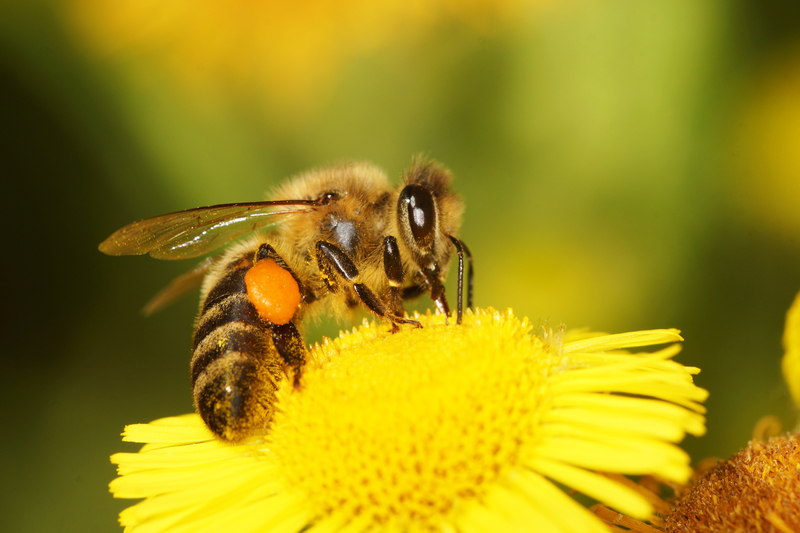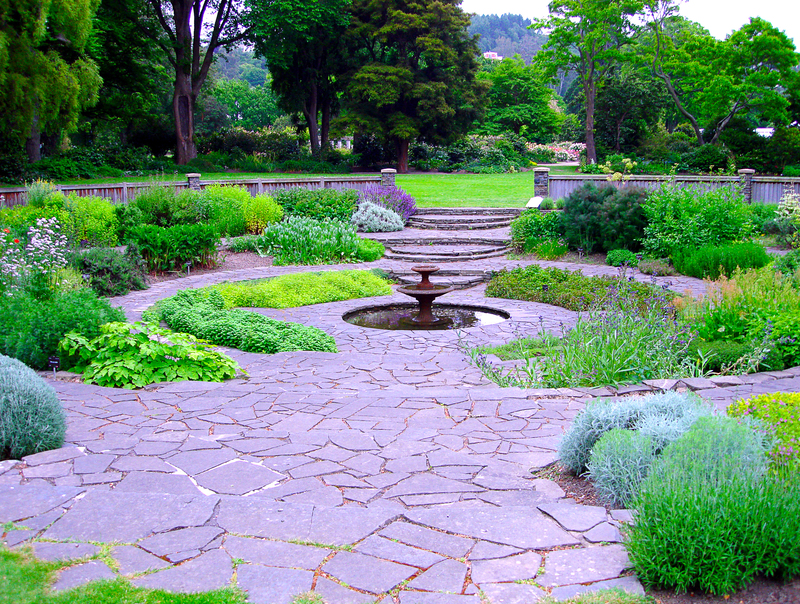Secrets to Thriving Orchids: Essential Care Tips
Posted on 24/06/2025
Secrets to Thriving Orchids: Essential Care Tips
Orchids are among the most captivating and exquisite flowers, admired worldwide for their beauty and diversity. However, their reputation for being "difficult" often deters beginners from attempting to grow them. The truth is, with the right knowledge and approach, anyone can master the art of orchid care and enjoy years of vibrant blooms. In this comprehensive guide, we unveil the secrets to thriving orchids, providing you with essential, actionable care tips to ensure your plants flourish--whether you are a novice or a seasoned orchid grower.
Understanding Your Orchid: Know the Species
One of the fundamental secrets to growing healthy orchids is understanding your plant's specific needs. There are more than 25,000 naturally occurring orchid species, but only a handful are commonly grown as houseplants. The most popular include:
- Phalaenopsis (Moth Orchids): Ideal for beginners; long-lasting blooms and adaptable nature.
- Cattleya: Known for their large, fragrant blossoms.
- Dendrobium: Diverse, with varying growth habits and flower forms.
- Oncidium ("Dancing Lady" Orchids): Distinguished by their delicate, branching sprays of flowers.
Each variety may have slightly different requirements. Identify your orchid species to tailor the best care routine for optimal health and flowering.

Optimal Lighting Conditions: The Key to Vibrant Blooms
Light is a critical factor for thriving orchids. Without adequate light, your orchids may never bloom.
Understanding Orchid Lighting Needs
- Phalaenopsis: Prefers bright, indirect light.
- Cattleya and Dendrobium: Benefit from several hours of filtered sunlight daily.
- Oncidium: Enjoys medium to bright, filtered light.
Tip: If the leaves are dark green, the plant may need more light; if they're yellowish, you might be giving too much. Place orchids near east or south-facing windows, using a sheer curtain to diffuse harsh rays if necessary.
Mastering the Art of Watering Orchids
How you water your orchid is often the difference between a thriving plant and a struggling one. Orchids are sensitive to both overwatering and underwatering.
Golden Rules for Watering Orchids
- Check the Roots: Healthy roots are firm and green or silvery. If they look mushy, scale back watering.
- Watering Frequency: Most household orchids prefer to dry out slightly between waterings. Water every 7-10 days during the growing season. In winter, reduce frequency.
- Method: Water early in the day so leaves can dry. Avoid letting water sit in the crown or between leaves.
- Use the Right Water: Rainwater or filtered water is best. Hard tap water may accumulate salts and damage roots over time.
Temperature and Humidity: Mimicking Nature
Creating the right climate is essential for flourishing orchids. Most tropical orchids do best in temperatures of 60-80?F (15-27?C) during the day, with a slight drop at night.
Humidity Tips for Healthy Orchids
- Humidity Levels: 50-70% is ideal.
- Methods to Increase Humidity:
- Place the orchid pot on a humidity tray filled with pebbles and water.
- Group plants together to create a microclimate.
- Use a room humidifier during dry winter months.
Ensure good air circulation around your orchids to prevent fungal diseases. Avoid cold drafts and sudden temperature changes, which can stress the plant.
Potting and Repotting: The Foundation of Thriving Orchids
Orchids are typically not grown in ordinary soil. In nature, many are epiphytes--growing on trees and rocks, not rooted in earth. The right potting mix is crucial for orchid health.
Selecting the Best Medium
- Bark-based mix: Good drainage, mimics natural environment.
- Sphagnum moss: Retains moisture; use for small orchids or those requiring more water.
- Charcoal, perlite, or coconut husk: Often added to enhance aeration and drainage.
Repotting Tips: Orchids generally need repotting every 1-2 years. Signs include roots growing out the pot or the potting mix breaking down and retaining excess water. Always choose a pot with ample drainage holes and gently tease out dead roots during the process.
Fertilizing Orchids: Feeding for Flourishing Blooms
Lush, repeat blooms are one of the ultimate secrets to healthy, thriving orchids. The right feeding routine makes all the difference.
How to Fertilize Orchids Correctly
- Use Balanced Orchid Fertilizer: Look for a formula like 20-20-20, diluted to half strength for every watering.
- Frequency: Fertilize every 2-4 weeks during active growth. Reduce in winter or when not in bloom.
- Flush with Clean Water: Every few months, rinse the pot with clean water to wash away fertilizer salts and prevent root burn.
A common orchid axiom is "weakly, weekly": feed with a very dilute fertilizer solution, but do so often, mimicking the nutritional trickle orchids receive in the wild.
Encouraging Orchids to Bloom Again
Have your orchid's blooms faded? The secret to reblooming orchids lies in understanding their rest cycle and providing the right cues.
- Temperature Dip: Many orchids require a slight nighttime temperature drop to trigger flowering. For example, keep your Phalaenopsis 10-15?F cooler at night for several weeks in autumn.
- Reduce Watering Slightly: During the plant's rest period, let the potting mix dry more between waterings.
- Prune Spent Flower Spikes: For Phalaenopsis, cut just above a node on the spike to encourage side shoots; for others, cut the spike at the base.
With patience and care, your orchid can reward you with another spectacular display!
Pest and Disease Management: Keeping Orchids Healthy
Even in ideal conditions, pests and diseases can threaten orchids. Early detection and intervention are essential for thriving orchid plants.
Common Orchid Pests
- Aphids, mealybugs, and scale: Treat with horticultural oil and remove insects with a cotton swab dipped in alcohol.
- Spider mites: Look for fine webbing on leaves; increase humidity and rinse leaves thoroughly.
Preventing Fungal and Bacterial Diseases
- Ensure Good Air Circulation: Position a small fan nearby, but avoid direct drafts.
- Avoid Overwatering: Never let water stand in the crown of the plant or between leaves.
- Remove Dead Material: Regularly clean old leaves or flowers from the pot and surface.
If your orchid does contract disease, isolate it from other plants and treat with a fungicide or bactericide suitable for orchids.
Orchid Care Through the Seasons
Climate changes throughout the year influence your orchid's care routine. Adjusting your practices with the seasons is another secret to keeping your orchid thriving.
- Spring/Summer:
- Increase watering and fertilizing as the plant enters active growth.
- Provide ample light while protecting from intense midday sun.
- Autumn/Winter:
- Reduce fertilizing as growth slows; water less frequently.
- Check humidity levels as indoor heating dries the air.
- Watch for pests, which often strike when conditions are less than ideal.
Advanced Orchid Care: For the Enthusiast
Ready to become a true orchid whisperer? Here are some expert-level tips to take your orchid maintenance to the next level:
- Experiment with Orchid Species: Try growing more challenging varieties like Vanda or Miltoniopsis as you gain confidence.
- Microclimate Management: Use grow lights, misting systems, or terrariums to fine-tune temperature and humidity.
- Propagation: Learn to propagate orchids by division or keiki (baby plant) removal.

Frequently Asked Questions for Thriving Orchids
1. Why are my orchid's leaves wrinkled or yellow?
This often indicates under- or over-watering. Check the roots and potting medium. Repot and adjust your watering routine as needed.
2. My orchid never blooms--what's wrong?
Lack of sufficient light is the top culprit. Move your orchid to a brighter spot and ensure it gets a nighttime temperature drop if required for blooming.
3. How do I tell when to repot my orchid?
Repot when the medium breaks down, roots are circling and cramped, or you spot rotting roots. Every 1-2 years is typical for most species.
4. What's the best way to clean orchid leaves?
Wipe gently with a damp cloth or use a diluted solution of water and a drop of gentle dish soap to remove dust and pests.
Conclusion: Cultivating the Secrets of Thriving Orchid Care
With a blend of observation, patience, and these essential orchid care tips, anyone can grow and maintain flourishing orchids at home. From understanding your plant's unique needs to mastering watering, feeding, and providing the right environment, the real secret is consistent, informed attention. Remember: orchids reward their caretakers with some of nature's most stunning and long-lasting blooms. Start applying these tips today and unlock the beauty of thriving orchids in your living space!
Ready to grow your next show-stopping orchid? Share your experiences and questions in the comments below, and let's keep discovering the secrets to thriving orchids together!

